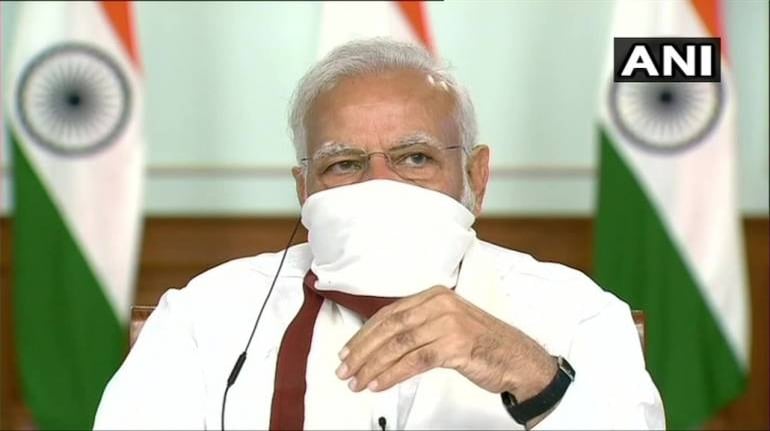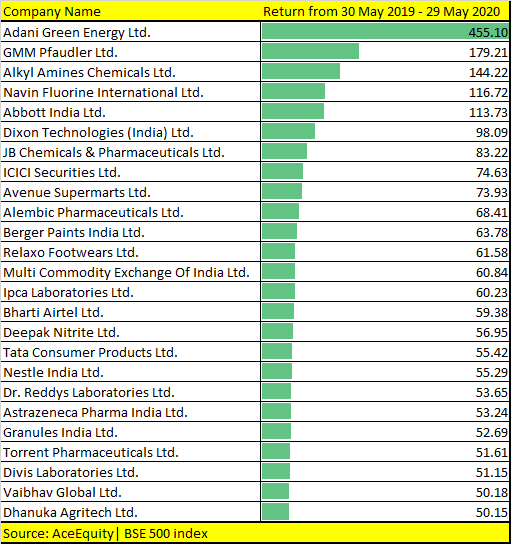




 Global cues remain muted as the equity investors across the world turned risk-averse largely on account of the US-China trade war, as well as outbreak of COVID-19 which resulted in shutdown of economic activity not just for India but other countries across the globe. The reforms initiated by the Modi-led government in its second term are pro-growth and bold decisions which the nation has seen in the last 70 years – pushing the nation towards ‘Atma Nirbhar Bharat’. However, the growth factor might come with a lag, and implementation of the said reforms in mining, agriculture, ease of doing business, defense, as well as land. “We have to factor in the series of unexpected events (both global and local) in the background of which these reform measures have been taken boldly without worrying about the political fallouts,” Deepak Jasani- Head of Retail Research, HDFC Securities told Moneycontrol. “PM Modi needs to continue promoting a good second level of able ministers with sufficient powers within defined limits. While a lot of reform measures have already been announced, the implementation part is lagging due to legacy process issues and reluctance of babudom in coming onboard. Also, the judiciary (and lawyers) have so far not changed sufficiently with the times,” he said. What to watch out for? The Indian market has fallen over 23 percent since May 30. And, the majority of the fall happened in the last 3-4 months thanks to the outbreak of COVID-19 which pushed Sensex and Nifty in a bear market, but small & midcaps have been in bear markets for the past 2 years. As many as 54 percent of the experts polled by Moneycontrol feel that the S&P BSE Sensex could trade in the range of 35,000-40,000 which translates into an upside of 14-30 percent from May 26 closing level of 30,609. Also Read - One year of Modi 2.0: Analysts see Sensex in 35000-40000 range in a year About 31 percent of the analyst feel that the markets are likely to remain flat and move in a range of 30,000-35,000 in the next one year. About 7 percent feel that we could see a record high above 43,000 while the remaining 8 percent are bearish and see the index trading below 30,000 in the next one year. In terms of earnings, almost 77 percent of the analysts polled by Moneycontrol are of the view that earnings are unlikely to recover anytime soon while the rest 23 percent are of the view that there is a chance of recovery in earnings in the next 1 year. The 4QFY20 earnings season has brought to the fore the challenging terrain ahead with multiple headwinds and moving parts. The adverse economic impact of COVID-19 is expected to wipe out FY21E earnings growth, suggest experts. “The two months of economic lockdown has taken a toll on corporate balance sheets even as underlying demand has suffered. The management commentaries suggest more volatility and disruption in earnings ahead with several Nifty companies seeing fresh double-digit EPS cuts for FY21E,” Ajay Menon, CEO, Broking and Distribution, Motilal Oswal Financial Services Ltd told Moneycontrol. “However, most company management have stressed the unique and unprecedented nature of the crisis, resulting in difficulty in providing guidance/predictions. So far, we are building in Nifty EPS decline of 2.4% for FY20 to INR472 and growth of +2.7% for FY21E to INR485,” he said. Experts feel that FY21 would be a flat year in terms of earnings growth for Indian corporate. Post the double-digit y-o-y decline in the first half of FY21, analysts see a recovery in the second half. Modi 2.0: Track all coverage hereDisclaimer: The views and investment tips expressed by investment experts on Moneycontrol.com are their own and not that of the website or its management. Moneycontrol.com advises users to check with certified experts before taking any investment decisions.
Global cues remain muted as the equity investors across the world turned risk-averse largely on account of the US-China trade war, as well as outbreak of COVID-19 which resulted in shutdown of economic activity not just for India but other countries across the globe. The reforms initiated by the Modi-led government in its second term are pro-growth and bold decisions which the nation has seen in the last 70 years – pushing the nation towards ‘Atma Nirbhar Bharat’. However, the growth factor might come with a lag, and implementation of the said reforms in mining, agriculture, ease of doing business, defense, as well as land. “We have to factor in the series of unexpected events (both global and local) in the background of which these reform measures have been taken boldly without worrying about the political fallouts,” Deepak Jasani- Head of Retail Research, HDFC Securities told Moneycontrol. “PM Modi needs to continue promoting a good second level of able ministers with sufficient powers within defined limits. While a lot of reform measures have already been announced, the implementation part is lagging due to legacy process issues and reluctance of babudom in coming onboard. Also, the judiciary (and lawyers) have so far not changed sufficiently with the times,” he said. What to watch out for? The Indian market has fallen over 23 percent since May 30. And, the majority of the fall happened in the last 3-4 months thanks to the outbreak of COVID-19 which pushed Sensex and Nifty in a bear market, but small & midcaps have been in bear markets for the past 2 years. As many as 54 percent of the experts polled by Moneycontrol feel that the S&P BSE Sensex could trade in the range of 35,000-40,000 which translates into an upside of 14-30 percent from May 26 closing level of 30,609. Also Read - One year of Modi 2.0: Analysts see Sensex in 35000-40000 range in a year About 31 percent of the analyst feel that the markets are likely to remain flat and move in a range of 30,000-35,000 in the next one year. About 7 percent feel that we could see a record high above 43,000 while the remaining 8 percent are bearish and see the index trading below 30,000 in the next one year. In terms of earnings, almost 77 percent of the analysts polled by Moneycontrol are of the view that earnings are unlikely to recover anytime soon while the rest 23 percent are of the view that there is a chance of recovery in earnings in the next 1 year. The 4QFY20 earnings season has brought to the fore the challenging terrain ahead with multiple headwinds and moving parts. The adverse economic impact of COVID-19 is expected to wipe out FY21E earnings growth, suggest experts. “The two months of economic lockdown has taken a toll on corporate balance sheets even as underlying demand has suffered. The management commentaries suggest more volatility and disruption in earnings ahead with several Nifty companies seeing fresh double-digit EPS cuts for FY21E,” Ajay Menon, CEO, Broking and Distribution, Motilal Oswal Financial Services Ltd told Moneycontrol. “However, most company management have stressed the unique and unprecedented nature of the crisis, resulting in difficulty in providing guidance/predictions. So far, we are building in Nifty EPS decline of 2.4% for FY20 to INR472 and growth of +2.7% for FY21E to INR485,” he said. Experts feel that FY21 would be a flat year in terms of earnings growth for Indian corporate. Post the double-digit y-o-y decline in the first half of FY21, analysts see a recovery in the second half. Modi 2.0: Track all coverage hereDisclaimer: The views and investment tips expressed by investment experts on Moneycontrol.com are their own and not that of the website or its management. Moneycontrol.com advises users to check with certified experts before taking any investment decisions.Discover the latest Business News, Sensex, and Nifty updates. Obtain Personal Finance insights, tax queries, and expert opinions on Moneycontrol or download the Moneycontrol App to stay updated!
Find the best of Al News in one place, specially curated for you every weekend.
Stay on top of the latest tech trends and biggest startup news.